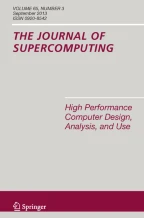Abstract
A complete graph is a fully-connected graph where every node is adjacent to all other nodes in the graph. Very often, many applications in science and engineering are reducible to this type of graph. Hence, a simplified form of a complete graph contributes in providing the solutions to these problems. In this paper, we present a technique for transforming a complete graph into a single-row routing problem. Single-row routing is a classical technique in the VLSI design that is known to be NP-complete. We solved this problem earlier using a method called ESSR, and, the same technique is applied to the present work to transform a complete graph into its single-row routing representation. A parallel computing model is proposed which contributes in making the problem modular and scalable. We also discuss the application of this work on the channel assignment problem in the wireless cellular telephone networks.
Similar content being viewed by others
Author information
Authors and Affiliations
Rights and permissions
About this article
Cite this article
Salleh, S., Olariu, S., Sanugi, B. et al. Single-Row Transformation of Complete Graphs. J Supercomput 31, 265–279 (2005). https://doi.org/10.1007/s11227-005-0184-4
Issue Date:
DOI: https://doi.org/10.1007/s11227-005-0184-4
